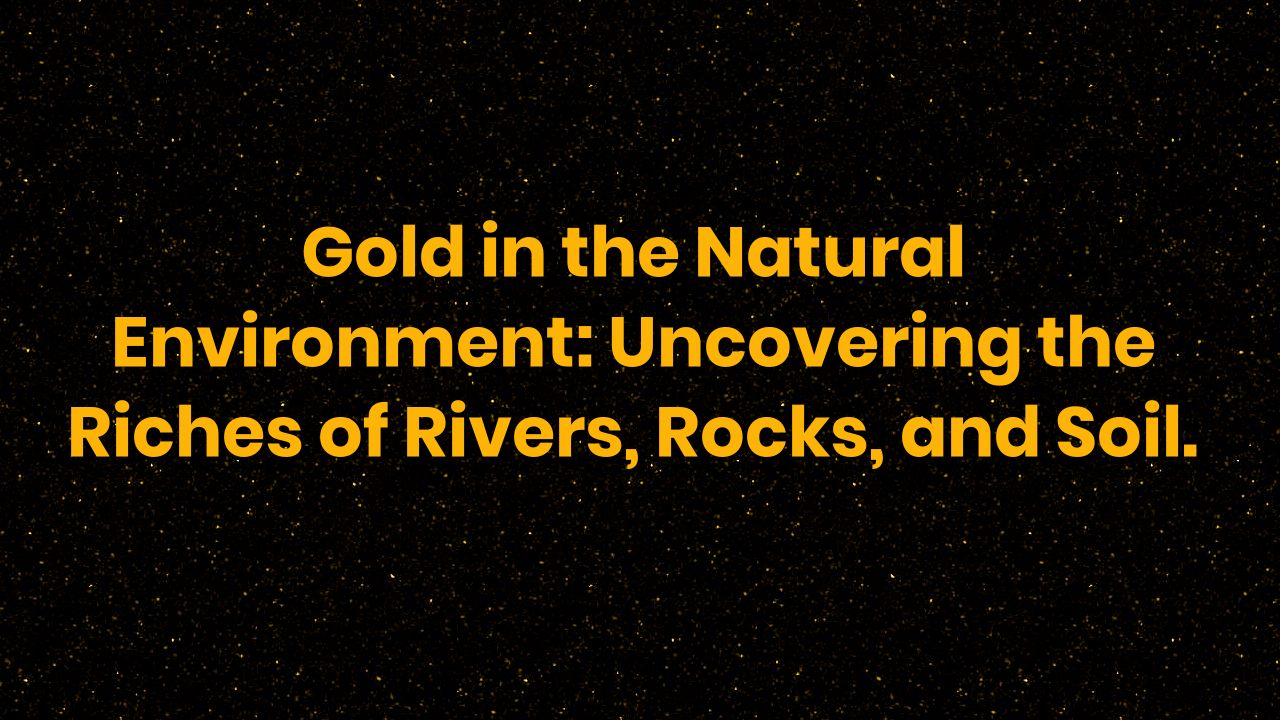
Table of Contents
In the Natural Environment: Uncovering the Riches of Rivers, Rocks, and Soil
Gold is an incredibly rare and valuable metal that has fascinated humans for thousands of years. It is found in the natural environment in a variety of forms, from tiny flakes in rivers to massive deposits deep in the earth’s crust. In this blog post, we will explore the ways in which gold is formed, accumulated, and discovered in the natural environment.
The Fascinating Process of Gold Formation
Gold is formed through a variety of geological processes, including volcanic activity, hydrothermal circulation, and weathering. These processes can take millions of years to occur, and require extreme heat and pressure. As a result, gold deposits are extremely rare and often occur in remote or hard-to-reach locations. Despite the challenges associated with gold formation, the rewards of uncovering a large deposit can be enormous.
The Role of Water in Gold Accumulation
Water plays a crucial role in the accumulation of gold deposits. As water circulates through the earth’s crust, it can pick up tiny particles of gold and carry them to new locations. When the water comes into contact with a mineral deposit, it can deposit its gold particles, leading to the formation of a new gold deposit. In some cases, this can lead to the formation of large, exceptionally rich deposits of gold.
Gold Deposits in Rocks and Mountains
Gold is often found in rocks and mountains, where it can form as a result of various geological processes. One of the most common sources of gold is quartz veins, which form when hydrothermal fluids circulate through cracks in rocks and deposit their gold particles. Other sources of gold include placer deposits, which form when gold particles are eroded from rocks and deposited in rivers or streams.
Uncovering Gold in Soils and Sediments
Gold can also be found in soils and sediments, typically as a result of weathering or erosion. This type of gold deposit is commonly referred to as a placer deposit, and can be found in rivers, streams, and alluvial fans. To extract gold from these deposits, miners typically use a variety of techniques, including panning, dredging, and sluicing.
Modern Techniques for Extracting Gold
In recent years, modern mining techniques have made it possible to extract gold from even the most challenging deposits. These techniques include open-pit mining, underground mining, and heap leaching. While modern mining methods have made it easier to extract gold, they have also led to environmental concerns, including habitat destruction and water pollution. As such, responsible mining practices are essential to ensuring that gold mining remains sustainable in the long term.
The Importance of Responsible Mining Practices
Responsible mining practices are crucial to ensuring that gold mining is sustainable in the long term. This includes minimizing the environmental impact of mining operations, ensuring the safety of workers, and supporting local communities. Responsible mining practices can also help to minimize the use of toxic chemicals, which can have a negative impact on both human health and the environment.
Gold’s Many Applications and Uses
Gold has many applications and uses, from jewelry and decorative objects to electronics and medicine. Gold’s unique physical and chemical properties make it a valuable material for a wide range of products and applications. Because of its rarity and intrinsic value, gold is also considered a valuable investment and store of wealth.
The Enduring Beauty and Value of Gold
Gold has been prized for its beauty and value for thousands of years, and continues to be a symbol of wealth and power today. Whether used for decorative purposes or as a store of wealth, gold retains its value and allure over time. With modern mining techniques and responsible mining practices, gold will continue to be a valuable and sought-after material for generations to come.
The Fascination of Gold: A Timeless Symbol of Wealth and Power
Gold has a timeless fascination that has endured for thousands of years. From ancient civilizations to modern times, gold has been a symbol of wealth, power, and prestige. Whether used to decorate royalty or worn by everyday people, gold has a universal appeal that transcends time and culture. As our understanding of the natural environment and our ability to extract gold continues to evolve, the fascination of gold will continue to endure.
Summary and Conclusion
Gold is an incredibly valuable and rare metal that has fascinated humans for thousands of years. It is found in the natural environment in a variety of forms, from tiny flakes in rivers to massive deposits deep in the earth’s crust. While the process of gold formation can be complex and challenging, modern mining techniques have made it possible to extract gold from even the most remote locations.
Despite its value and appeal, however, responsible mining practices are crucial to ensuring that gold mining is sustainable in the long term. By minimizing the environmental impact of mining operations, ensuring worker safety, and supporting local communities, we can ensure that gold mining remains a viable and sustainable industry for generations to come.





